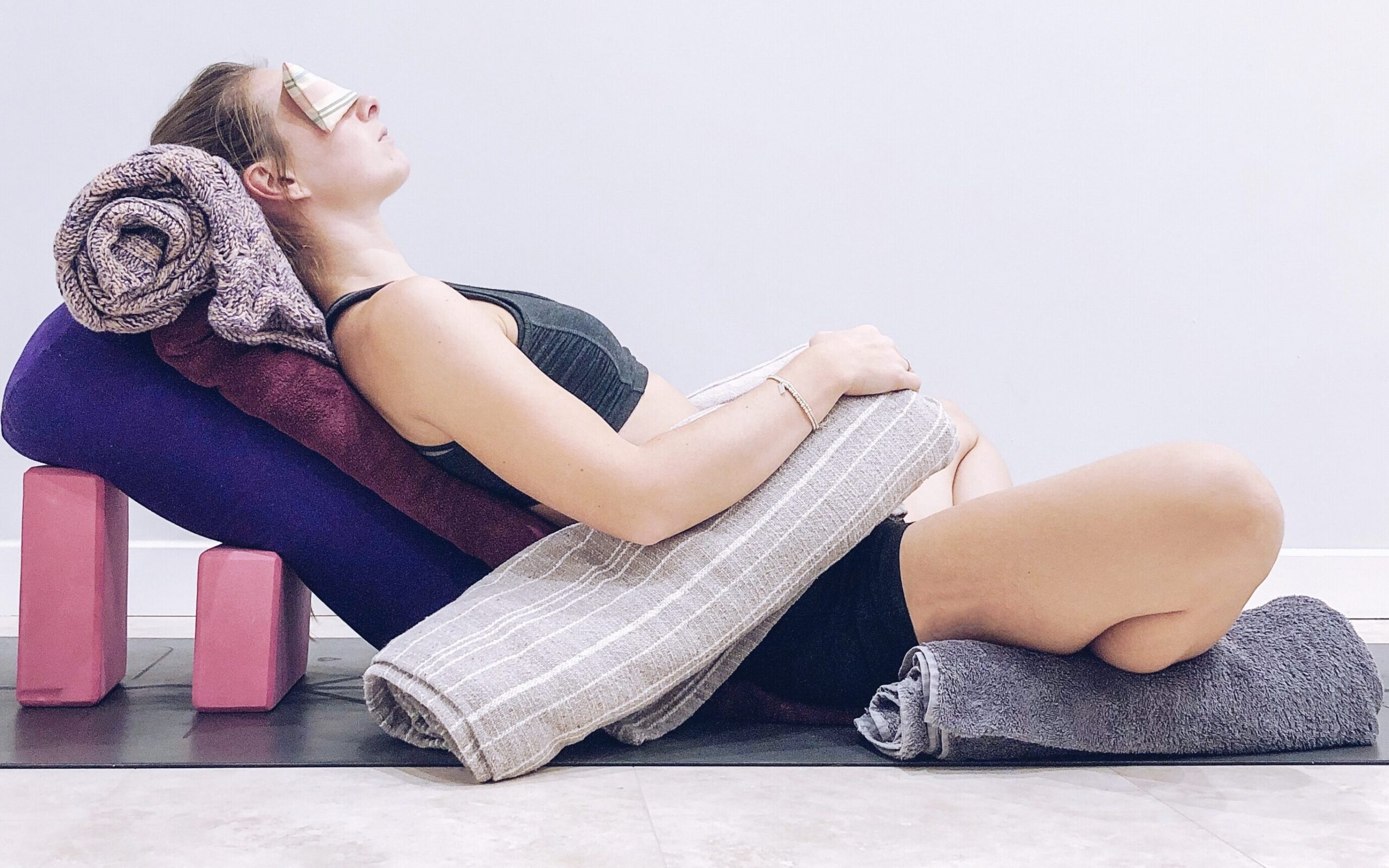Restorative yoga is the practice of conscious, active rest. It is a slower-paced type of yoga with sequences containing only a small number of asanas held for longer periods of time. Props are used in order to support the body in positions of comfort to encourage deep relaxation and thus allow restoration, growth, healing and repair.

The science behind restorative yoga. Why do we need it?
Our autonomic nervous system works unconsciously, behind the scenes to keep our bodies in a delicate balance of healthy functioning. The autonomic nervous system has two major branches; the sympathetic and parasympathetic nervous systems. These systems have opposing but complimentary functions that regulate all our internal organs and thus important bodily functions, such as heart and breathing rate, digestion, urination and reproductive functioning. The sympathetic nervous system can best be viewed as the accelerator and the parasympathetic nervous system the brake. We need both working together in harmony for a smooth journey.
In today’s busy world there is a tendency towards over activation of the ‘stress response’. The body’s stress response is governed by the sympathetic nervous system. It is an essential mechanism for survival, designed to keep us safe in life threatening situations. This comprises a collection of physical and thought responses that prepare the body for ‘fight or flight’, such as increased heart rate and blood being diverted to our skeletal muscles. Unfortunately, however, it can become activated unnecessarily such as when thinking about perceived or actual stressors, past or future events. That looming work deadline for example or an unexpected bill. Sustained activation of the sympathetic nervous system can lead to chronic stress.
Restorative yoga shifts the body into what is known as parasympathetic dominance. The parasympathetic nervous system is the branch of the autonomic nervous system responsible for our ‘rest and digest’ response. When the parasympathetic nervous system is activated, intestinal and gland activity is increased, heart rate and blood pressure is lowered, breathing slows and muscle tension and tone is reduced. This relaxed state cultivates a sense of mental and physical calm and allows the body to rest and repair. In today’s busy world, rest is considered a luxury, in actual fact it is a necessity for emotional and physical wellbeing.
What are the benefits?
- Restorative yoga deeply soothes the body, with the shift towards parasympathetic dominance creating an environment for growth, healing, restoration and repair. This can mean it is particularly beneficial for those recovering from injury or illness.
- It is the mind’s job to continually consider, analyse and plan ahead. Restorative yoga facilitates a detachment from our constant internal narrative with breath focus in a safe and comfortable low stimulus environment. The calming of our minds dispels anxiety and allows for deeper states of relaxation. This can be especially beneficial for those struggling with stress-related conditions such as anxiety and insomnia. Furthermore, conscious practice of a state of calm makes it possible for us to access it more easily. We become much more familiar with the sensation of calm we have cultivated during our practice and can call upon at times of stress and difficulty. This can help us to feel more in control in anxiety provoking situations.
- When we are well rested and emotionally and energetically rebalanced, we are much better able to offer the truest version of ourselves. We are more likely to cultivate openness, generosity and kindness and reconnect with our true nature.
Props. What equipment do I need for restorative yoga?
Props are an essential part of restorative yoga practice. Not only do they facilitate the positioning of the body in a state of comfort and ease, they also protect from over-stimulation by environmental factors that would otherwise adversely affect our ability to rest. Examples include cold (blankets), light (eye pillow) and muscle stretch (strap).
Below is the standard prop list for a restorative practice:
Essential:
- Yoga mat
- Eye pillow
- Strap
- Blankets
- Bolster
- Bricks and Blocks
Optional:
- Sand bags
- Chair
Although it might appear a daunting (and potentially expensive!) list, there is plenty of room to get creative. For instance, towels can replace blankets, pillows and cushions can be used for bolsters, a standard travel eye mask can replace an eye pillow and a dinning chair or sofa can easily be used instead of a yoga chair.
Asanas. What are the restorative yoga poses?
We will explore several of the restorative poses in depth in order to understand the specific positioning details, benefits and contraindications. Below is a list of the most popular restorative yoga poses:
- Savasana – Corpse pose
- Viparita Karani – Legs-up-the-wall pose
- Salamba Supta Virasana – Supported reclined hero pose
- Balasana – Childs pose
- Salamba Supta Baddha Konasana – Supported reclined bound angel pose
- Supported Backbends
Learn more about the different ways I can support you with your yoga: Studio Yoga classes, Online Yoga Classes & Corporate Yoga Classes.